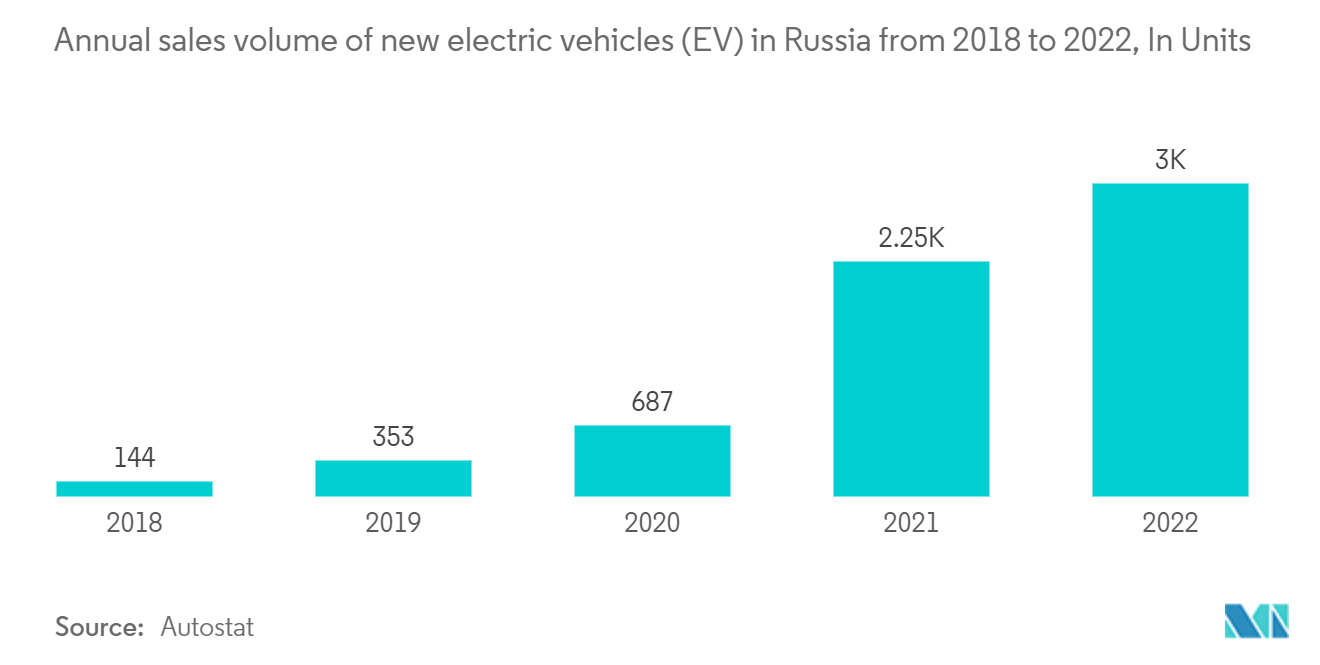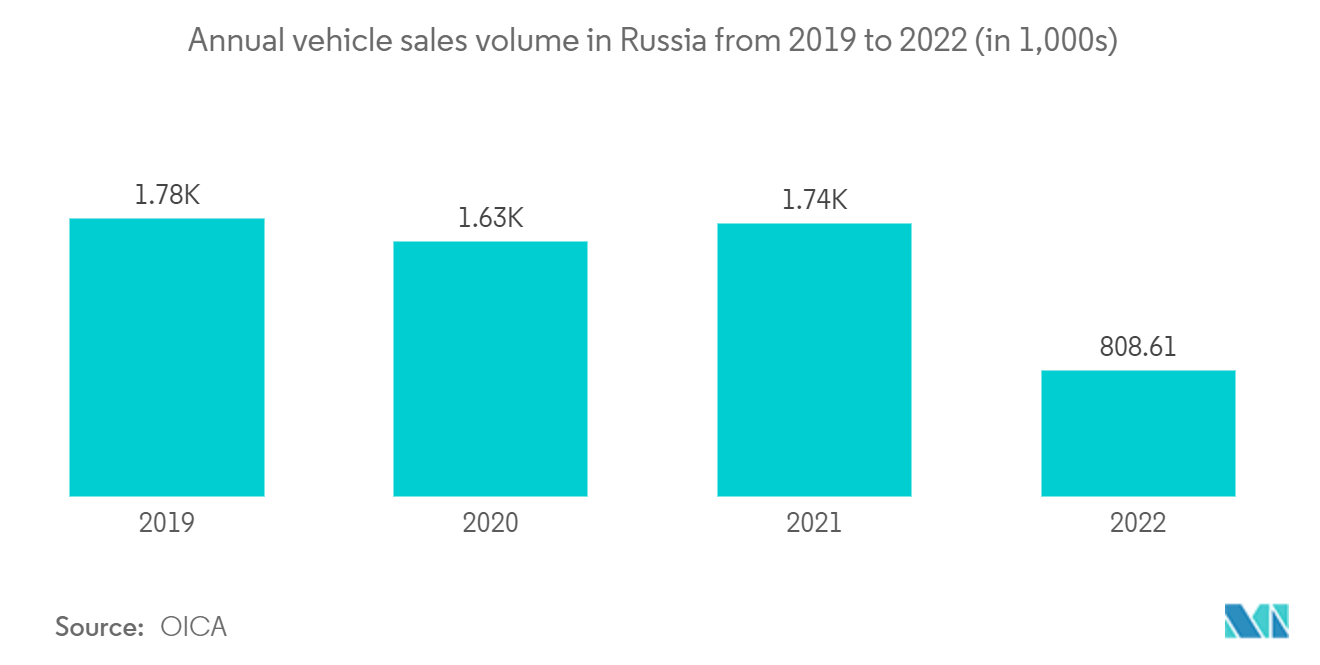Market Trends of Russia Electric Power Steering Industry
Battery Electric Vehicles Witnessing Major Growth
Russia's automobile industry is electrifying at a rapid pace, but the country still lags in absolute numbers. The world's main vehicle markets, Europe, the United States, and China, are making significant progress toward zero- and low-emissions transportation, such as Russia.
In 2022, the number of new electric cars sold in Russia reached 2,998. Since 2016, when the sales volume was only 83 automobiles per year, the volume has been growing. However, the world's largest country is now moving forward with plans to increase electric vehicle manufacturing.
Over the forecasting years, Russia intends to increase the number of electric vehicles on the roads and to develop a market for battery-powered vehicles. Russia is focusing more on the automotive industry and investing billions of dollars in electric vehicle (EV) manufacturing rather than the production of combustion-engine vehicles.
The Russian government has set the goal that EV manufacturing in the country should reach 10% of total automobile production by the end of 2030. It will cost around 591 billion rubles (USD 8 billion). The country has plans to have at least 25,000 EVs on the road and more than 9,000 charging stations on its roadways in the first stage of the strategy, which runs from 2021 to 2024. Fast-charging stations have been established around the country to let customers power their automobiles fast and effectively.
In Russia, the government has installed about 4,367 charging stations, with 3,679 slow charging points and 688 rapid charging points in the first half of 2023. Moreover, to boost EV adoption, the government would provide purchasers with incentives such as loans and favorable lease conditions for electric vehicles. Furthermore, since 2022, EVs are free to use on Russia's toll highways.
The developments mentioned above across the country are likely to enhance the demand for battery electric vehicles, which in turn is anticipated to witness major growth for the market during the forecast period.

Sensor Component Witnessing Major Growth
The steering sensor is an integral part of the vehicle safety system as the sensor combines with other sensors and works in tandem to efficiently operate the vehicle’s electronic stability system (ESC).
Electronic stability control (ESC) is a system of sensors and computers that detect and reduce traction loss to improve vehicle stability. Hence, all the cars manufactured since come with a steering angle sensor. This includes commercial vehicles and passenger cars irrespective of their powertrain (e.g., electric, gasoline, fuel cell, etc.).
Multi-sensor fusion has recently emerged as a potential technique owing to its use in the Internet of Things [IoT], intelligent autonomous systems, robotics, intelligent industries, self-driving mobility, and others. These many application areas all have one thing in common: they contain many sensors from the same or distinct categories.
The steering wheel position and torque applied by the driver are both combined are measured by a multi-function sensor system. The Electronic Control Unit receives the inputs, and to apply the required torque, the ECU sends signals to the steering drive. The multi-function sensor in the automotive steering is used in both types of power steering systems, electronic as well as hydraulic.
The health monitoring sensor is built into the steering wheel that tracks vital signs and stress levels using metrics like heart rate and blood oxygen saturation and takes action to decrease distractions or slow the car down. Using the data from the sensors, the vehicle can also detect driver drowsiness, increasing vehicle safety on the road.
As the majority of the cars with advanced driver aid systems (ADAS) come with health monitoring sensors, the growing demand for cars with ADAS will propel the market in the coming years.
With the growth in the number of vehicles, the demand for the sensors in electric power steering is expected to grow in the forecast period.


